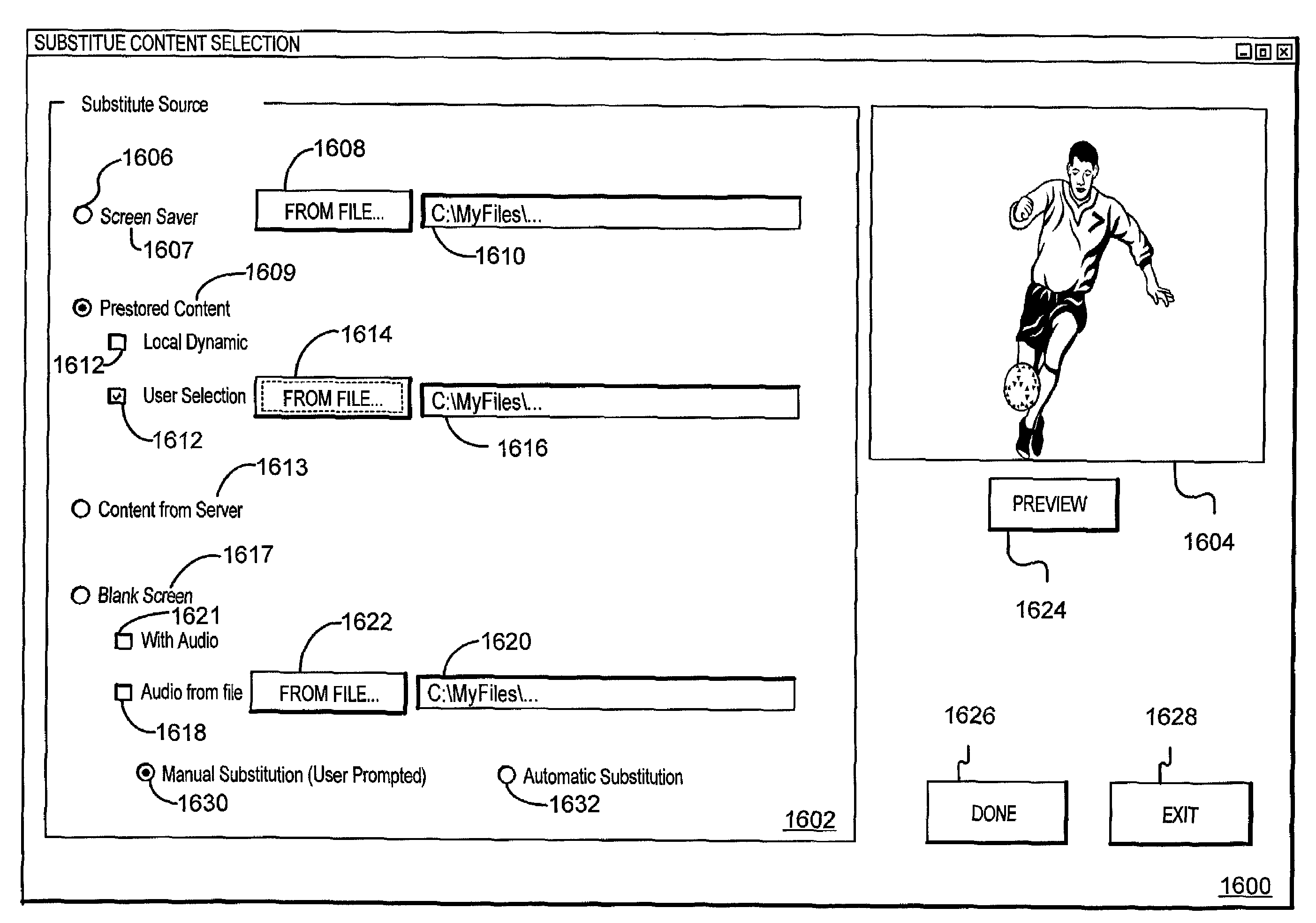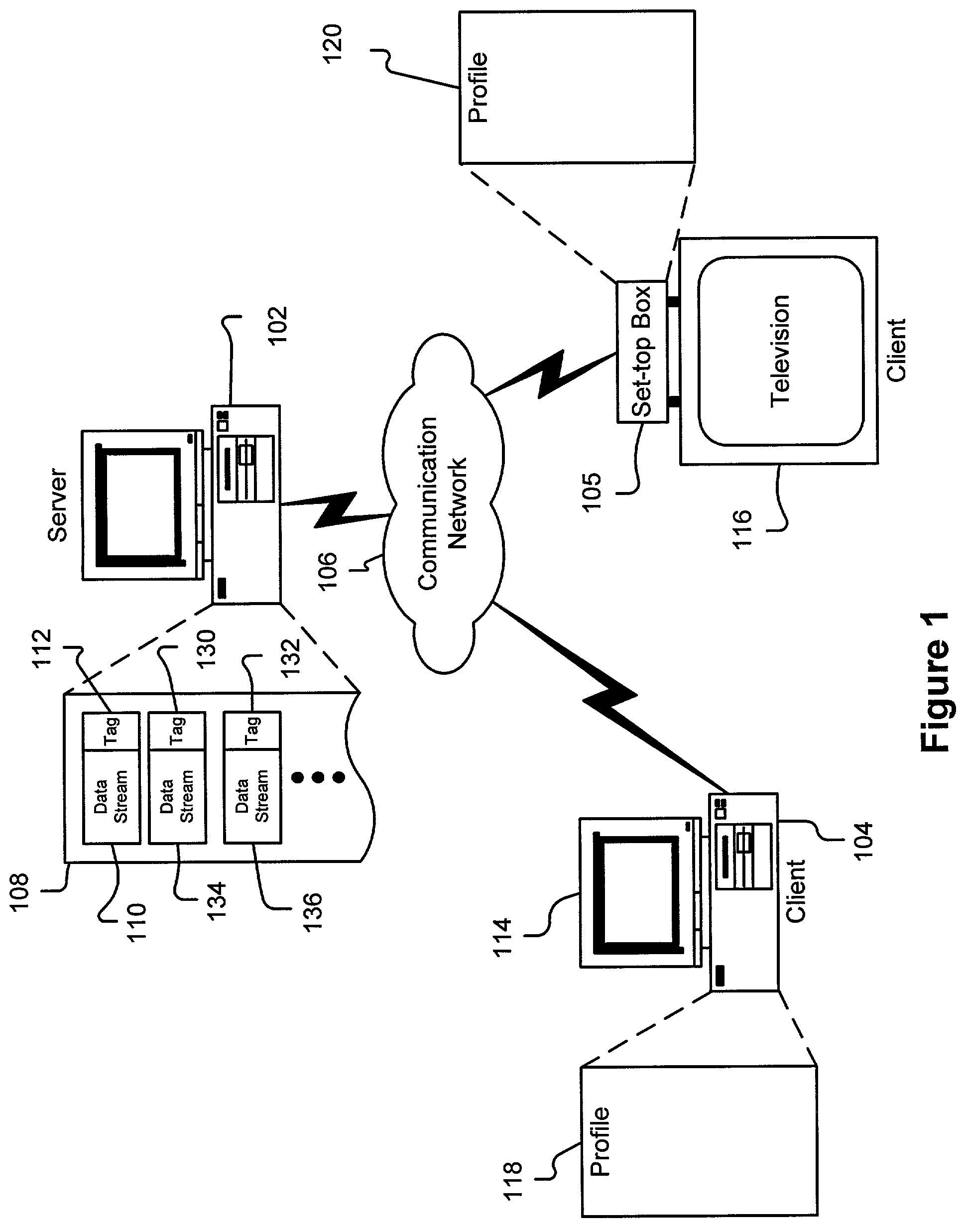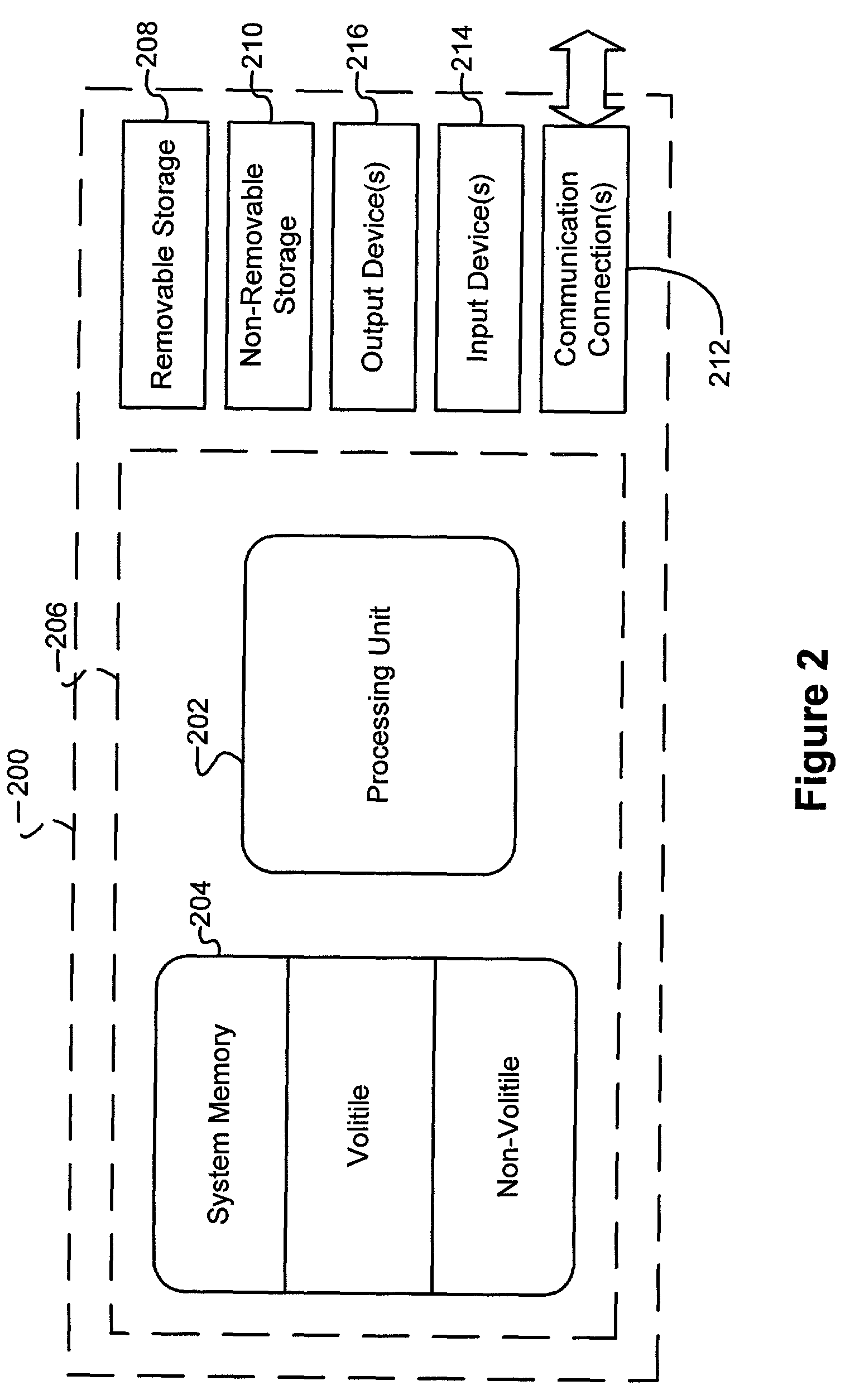System and method for providing substitute content in place of blocked content
a technology of blocking content and substitute content, applied in the field of networked media delivery systems, can solve the problems of affecting the selection of content, and too much content provided to any given user,
- Summary
- Abstract
- Description
- Claims
- Application Information
AI Technical Summary
Problems solved by technology
Method used
Image
Examples
Embodiment Construction
[0041]FIG. 1 illustrates an exemplary operating environment 100 employing an embodiment of the present invention. A server device 102 communicates with one or more client devices, such as client device 104 and / or client device 105, via a communication network 106. Server device 102 transmits media content, such as, but not limited to, video, audio, text, or executable programs, over the communication network 106 to be used by the client devices 104 and / or 105. Each of the client devices 104 and / or 105 has an output device, such as a computer monitor 114, or a television screen 116, for presenting media content to the user.
[0042]The server device 102 has memory 108 that stores media content in the form of data streams 110, 134, and 136. The server device 102 also stores an associated tag, such as tags 112, 130, and 132, with each data stream 110, 134, and 136, respectively. Each of the tags 112, 130, and 132 may be unique from the others and may further be associated with user classi...
PUM
 Login to View More
Login to View More Abstract
Description
Claims
Application Information
 Login to View More
Login to View More - R&D
- Intellectual Property
- Life Sciences
- Materials
- Tech Scout
- Unparalleled Data Quality
- Higher Quality Content
- 60% Fewer Hallucinations
Browse by: Latest US Patents, China's latest patents, Technical Efficacy Thesaurus, Application Domain, Technology Topic, Popular Technical Reports.
© 2025 PatSnap. All rights reserved.Legal|Privacy policy|Modern Slavery Act Transparency Statement|Sitemap|About US| Contact US: help@patsnap.com



